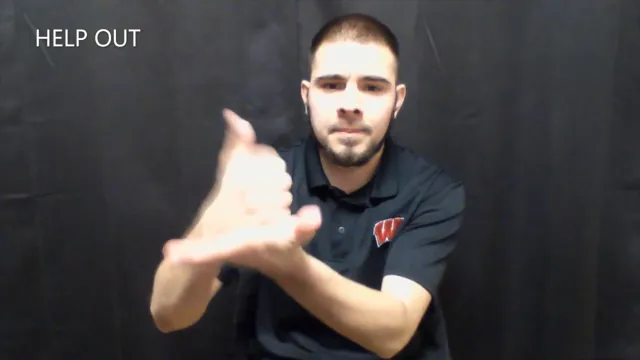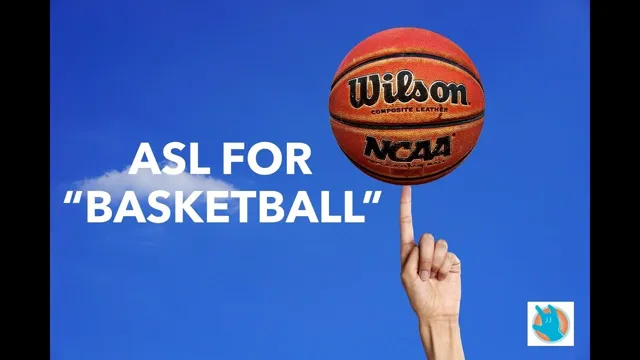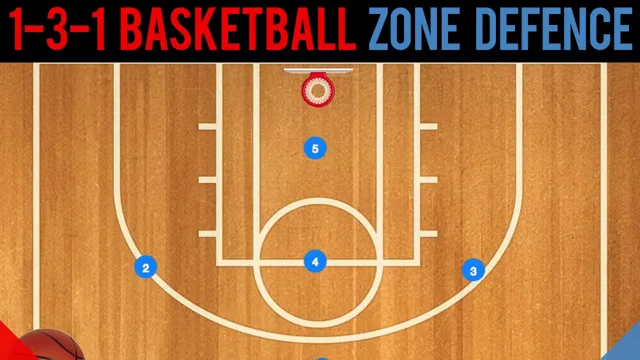Basketball is a beloved sport worldwide, with millions of fans watching the big leagues and playing for fun in their backyards. However, what about those who communicate through sign language? How do they experience and comprehend the game? This is where basketball in sign language comes into play. Sign language is a powerful tool, allowing people to express and understand complex ideas without the use of spoken language.
In this blog, we will explore how basketball can be translated into sign language, including the unique gestures and signs used to represent the movements and plays of the game. Join us as we dive into the fascinating world of basketball in sign language.
Introduction
Basketball in sign language is an exciting and unique way for deaf and hard-of-hearing individuals to connect with the game. Unlike typical basketball games where sound plays an important role, deaf and hard-of-hearing individuals use sign language to communicate with teammates and coaches. The rules and strategies of the game remain the same, but sign language allows for a different type of communication.
Since basketball requires a lot of teamwork and coordination, signing allows for a more natural and effective way of communicating with one another. Learning sign language to play basketball not only improves communication on the court, but it can also be an opportunity to learn a new language and be inclusive to those who are deaf or hard-of-hearing.
Understanding Sign Language
Sign language is an incredibly rich and diverse form of communication that uses visual gestures, facial expressions, and body language to convey meaning and emotion. It is used by millions of people worldwide who are deaf or hard of hearing, and it allows them to communicate with ease and express themselves just like anyone else. However, sign language is not just a tool for the deaf community; it is a fascinating skill that anyone can learn and use to communicate in a new and unique way.
Learning sign language can be a great way to connect with others, break down barriers, and gain a deeper understanding of the diverse range of languages and cultures in our world. So, whether you are looking to communicate with someone who is deaf or just want to challenge yourself and learn something new, sign language is a wonderful form of expression that can enrich your life in countless ways.

Why Learn Sign Language for Basketball?
Sign language has always been an interesting and useful way to communicate. Whether we’re hard of hearing, communicating from a far distance, or just want to learn something new, it’s a language that has a lot of benefits. But have you ever considered learning sign language for basketball? It may not be the first thing that comes to mind when you think of sports, but it has a lot of advantages.
From better team communication to increased accessibility, sign language can benefit both players and coaches on and off the court. So, why not give it a try and learn something new to enhance your basketball skills?
Basic Basketball Signs
Basketball in sign language can be a fun and exciting way to communicate with teammates, coaches, and referees on the court. Understanding basic signs and signals can help ensure smooth communication during games and practices. For example, a common sign is pointing to the floor, which indicates a need to start the game by tipping off the ball.
Other signs, like tapping the chest or signaling with a closed fist, may indicate specific plays or defensive strategies. It’s important to learn and practice these signs to avoid confusion and miscommunication during games. So, if you’re a basketball player or coach looking to improve your communication on the court, consider learning the basics of basketball signs in sign language.
Signs for Scoring and Shooting
As a basketball coach, you know the importance of clear communication on the court. One way to ensure that everyone is on the same page is by using basic basketball signs for scoring and shooting. These signs can be simple gestures or hand signals that have specific meanings.
For example, you might use a fist to signal a pick and roll play, or raise your arm to signal a screen. Other common signs include pointing to the player who should take the shot, making a “T” with your hands to signal a timeout, or forming a circle with your hands to signal a zone defense. By using these signs consistently, you can help your team react quickly and efficiently on the court, and ultimately improve your chances of winning games.
Signs for Passing
As a basketball player, knowing basic signs for passing is essential to effective team communication. Signals facilitate swift and accurate passing between players, minimizing turnover. The most basic basketball sign for passing is the hand signal, where the passer will extend one arm and point to where they want the ball to be passed.
This sign may be accompanied by calling out a specific teammate’s name or number to help identify the intended recipient. Another common sign is the pass back signal, where the passer fakes a pass, and then signals the receiver to cut towards the basket or move towards them to regain the ball. These two basic basketball signs for passing are fundamental in basketball, and mastering them will take your team’s performance to the next level.
Signs for Defense
As an essential aspect of any basketball game, defense plays a vital role in keeping the team score low. Effective communication is fundamental to any successful defense, which is where basketball signs come in. These gestures are used as non-verbal cues to convey various defensive formations and strategies to players.
Knowing these signs is crucial for any basketball player, but it is particularly important for young players who are just starting. Basic basketball signs include “pointing,” or indicating the player to guard, “switching,” indicating when the defender should switch positions with another to cover the ball, and “zone defense,” where the coach indicates how players should position themselves to cover different areas of the court. By understanding and utilizing these signs, players can stay ahead of the game and keep the opposition score at bay.
Advanced Basketball Signs
Basketball is a sport that can be enjoyed by anyone, regardless of ability or hearing impairment. It is becoming increasingly popular for basketball players to communicate using sign language, allowing players to communicate quickly and efficiently on the court. By using basketball signs, players can signal their teammates when to execute a specific play, such as a pick-and-roll, a defense switch, or a screen.
These signs can be used to transmit information about an opponent’s weaknesses, such as a slow dribble or poor shooting form. Overall, using basketball signs is an advanced technique that allows players to enhance their communication, which can lead to more effective teamwork on the court. With the help of sign language, players can better understand each other’s movements, anticipate the next move, and make quicker, more precise passes, ultimately improving the outcome of the game.
Signs for Strategies and Plays
Basketball teams use signs to communicate quickly and discreetly during games. Advanced basketball signs go beyond the basic hand signals for plays and cover a range of strategies that coaches and players have developed over time. These signs might include a quick touch of the earlobe to signal to a teammate to switch on defense or a tap on the hip to indicate a backdoor cut.
Advanced basketball signs require a lot of practice to execute seamlessly, but they provide teams with a considerable advantage in terms of speed and efficiency. They allow players to communicate quickly and covertly, often without alerting their opponents to their intentions. Using advanced basketball signs can overwhelm and confuse opposing teams, potentially leading to missed assignments or blown coverage.
In short, advanced basketball signs are a crucial tool in the arsenal of any successful basketball team.
Signs for Referee Calls
Looking to up your referee game in basketball? Learning advanced signs can be a game-changer. Along with the standard calls of fouls and violations, advanced basketball signs can help you communicate with players and coaches clearly and efficiently. The “over the back” call, for example, is a hand held high above the head with fingers spread out, signaling that a player has reached over an opponent’s back to grab a rebound.
The “hand in the cookie jar” sign is another worth adding to your arsenal, indicating that a player has reached in and made contact with an opponent who has the ball. These advanced calls can help keep the game moving, prevent confusion, and enhance your confidence and authority as a referee.
Conclusion
In basketball, hands are the key players. From dribbling and passing to shooting and defending, each move relies on precise hand movements. And for those who communicate through sign language, the hands can also be used to express basketball jargon.
So, with fingers tapping, palms clapping, and sign language in action, basketball truly becomes a game of hands and language.”
FAQs
How do you say “basketball” in sign language?
To sign “basketball” in American Sign Language, hold both hands in front of you with your non-dominant hand slightly higher than your dominant hand. Then, form the letter “O” with your dominant hand and place it on top of your non-dominant hand, which should be forming a slight cup shape.
What is the proper sign for “shoot” in basketball in sign language?
To sign “shoot” in sign language, form the letter “L” with your dominant hand and extend your arm out in front of you. Then, use your other hand to gently tap your elbow, mimicking the motion of shooting a basketball.
Can you show me the sign for “dribble” in basketball in sign language?
To sign “dribble” in sign language, make a fist with your dominant hand and hold it in front of you. Then, use your other hand to gently tap the top of your fist, mimicking the motion of bouncing a basketball.
How do you sign “pass” in basketball in sign language?
To sign “pass” in sign language, hold your dominant hand out in front of you with the palm facing up. Then, use your other hand to make a throwing motion, as if passing a basketball into the palm of your dominant hand.
What is the sign for “team” in basketball in sign language?
To sign “team” in sign language, hold both hands out in front of you and interlock your fingers. Then, twist your hands back and forth, mimicking the motion of multiple people working together as a team.


